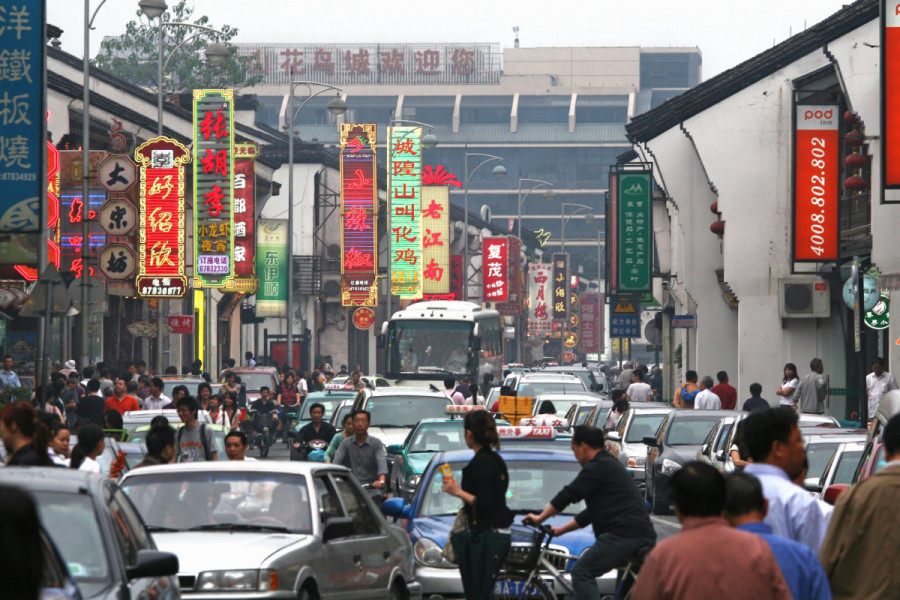Columns
What sustains the growth of China’s economy
China is promoting modernisation with high-quality development while maintaining stability.
Chen Song
The year 2023 was the first year for China to fully implement the spirit of the 20th National Congress of the Communist Party of China (CPC) and the year for economic development after the policy adjustment of Covid-19 prevention. Over the past year, the Chinese economy has withstood pressure, achieved improvement and taken solid steps towards building a modernised socialist country in all respects. China is solidly promoting high-quality development, injecting more vitality and greater confidence into the world’s economic recovery.
The Chinese economy provides an important driving force for the world. Against the backdrop of worldwide turbulence and transformation and lacking economic growth momentum, China's economic development in 2023 has shown stability, progress and improvement characteristics, with a total annual economic output exceeding 126 trillion yuan and a growth rate of 5.2 percent. Whether compared horizontally with major global economies or vertically with China the previous year, this transcript is impressive and hard won.
In 2023, China's economic growth exceeded 6 trillion yuan, equivalent to the total economic output of a medium-sized country in one year. The International Financial Forum report shows that in 2023, the Chinese economy contributed 32 percent—the largest such contribution—to global economic growth. Research by the International Monetary Fund (IMF) shows that China's economic growth has a positive spillover effect on other regions of the world. Every 1 percent increase in China's economy will increase the output levels of other economies by an average of 0.3 percent. IMF President Georgieva believes that the achievement of China's economic goals is good for the country, Asia and the world.
China’s economic prowess has brought rare stability to the world. As the world's second-largest economy, the Chinese economy has long-term positive fundamentals. China is the only country with all industrial categories listed in the United Nations Industrial Classification. The added value of manufacturing accounts for about 30 percent of the world's, ranking first in the world for 14 consecutive years, and has formed over 200 mature industrial clusters; China's "demographic dividend" is improving to a "talent dividend", and its total human resources, scientific and technological human resources, and total R&D personnel all rank first in the world; China's overall R&D investment and investment in high-tech industries have maintained double-digit growth for many consecutive years. The application of emerging technologies is accelerating, and new products and business formats are constantly appearing, providing new momentum for China's development. The Pakistan Observer newspaper pointed out in an article that the stable growth momentum of China's economy highlights its resilience and ability for sustained development, making it a key player in shaping the trajectory of global economic recovery.
the Chinese economy injects strong confidence into global recovery. The size of the Chinese economy is getting bigger, and its muscles are also getting stronger. In 2023, the total retail sales of consumer goods in China exceeded 47 trillion yuan. The contribution rate of China's final consumption expenditure to economic growth is 82.5 percent. The Chinese economy continues to accumulate energy for high-quality development.
At present, the middle-income population in China exceeds 400 million, and it is expected to reach 800 million in the next decade. The demand for goods and services is shifting from basic to high-quality, and there is a powerful driving force for consumption upgrading. Former Australian Prime Minister Kevin Rudd pointed out that as long as Chinese consumers have confidence in the future, the Chinese economy will maintain good growth.
The total export of electric vehicles, lithium-ion batteries and solar cells reached 1.06 trillion yuan, breaking the trillion yuan mark for the first time, with a year-on-year increase of 29.9 percent, which has attracted much attention. "For those with long-term vision, China's investment in product and technological innovation is increasing day by day, which should become a source of confidence in the country's long-term economic prospects," commented foreign media.
China will continue to share new development opportunities with other countries. Against the backdrop of the accumulation of global economic risks and the prevalence of protectionism, China has always adhered to the principle of openness as it develops, actively creating a market-oriented, law-based and internationalised first-class business environment. In October last year, China announced the complete lifting of restrictions on foreign investment access in the manufacturing sector and continued to open up opportunities in China's manufacturing industry to global investors.
In the past five years, the return on foreign direct investment in China has been about 9 percent, which is at a relatively high level internationally. As McKinsey China Chairman Joe Ngai said, in terms of market size, consumption capacity, and innovation ability, there is no region in the world that can replace the Chinese market. He believes that for multinational corporations, the Chinese market is not only a base for innovation, but also will provide inspiration for more consumer sectors, and "multinational corporations should continue to invest in China."
China is promoting modernisation in an all-round way with high-quality development and insists on progress while maintaining stability. It will continue to promote the economy to achieve qualitative improvement and quantitative growth with greater intensity and more practical measures, continue to consolidate the good momentum of economic recovery, bring more benefits to the world and contribute more impetus to global development.




 11.12°C Kathmandu
11.12°C Kathmandu













%20(1).jpg&w=300&height=200)

